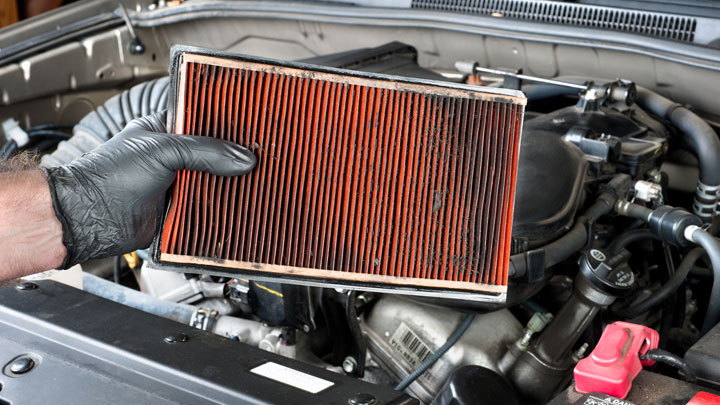P0068 Code (Symptoms, Causes, and How to Fix)
Your car’s check engine light comes on, you plug in an OBD-II scanner, and see the problem… a P0068 code. Well that doesn’t help much.
Let’s look at what fault code P0068 means, what causes it, whether you can continue driving, and most importantly, what you need to do to fix it.
- DTC P0068: Discrepancy detected between air pressure and air flow sensor readings.
- Can you still drive?: Yes, but with reduced performance and risk of stalling.
- Common causes: Dirty air filter, vacuum leak, bad MAP or MAF sensor.
- DIY Fix Difficulty: Moderate. Some causes can be identified and fixed by car owners, others require professional diagnosis.
What Does Code P0068 Mean?
Diagnostic fault code P0068 relates to discrepancies between MAP and MAF sensor feedback, as interpreted by an engine’s ECM or PCM. Both the manifold absolute pressure (MAP) sensor and mass air flow (MAF) sensor provide essential feedback required under normal situations to determine adequate injector pulse and spark advance under a given set of circumstances.
An engine’s manifold absolute pressure sensor monitors the overall density of air within the intake manifold, as well as the pressure therein. By proxy, feedback of this type relays invaluable information regarding the effects of temperature, humidity, and altitude upon overall intake pressure.
Meanwhile, a vehicle’s mass air flow sensor monitors the amount of air that is introduced into the intake tract as a whole. A small energized resistor spans the inner diameter of the MAF sensor body itself, which is heated to a predetermined temperature.
The more intake air that is drawn across this element, the higher the voltage required to sustain this predetermined temperature. Feedback in relation to these requirements is relayed to the PCM/ECM in real-time.
Feedback from an engine’s MAF and MAP sensors is constantly compared to that of a vehicle’s throttle position sensor. This is done to ensure that adequate throttle plate actuation occurs in response to throttle demands.
Simply put, a vehicle’s control software expects to see a predetermined response from an engine’s MAF and MAP sensors, with each stab of the accelerator.
Diagnostic fault code P0068 is logged whenever feedback from an engine’s MAP and MAF sensors appear irrational when compared to one another. In response to this abnormality, a vehicle’s check engine light is illuminated, and entry into a fail-safe limp mode might even be initiated.
Symptoms of Code P0068

Code P0068 is sometimes accompanied by other noticeable symptoms… some minor, others, more serious. Savvy drivers who recognize these secondary symptoms can often quickly and accurately pinpoint the root cause triggering the P0068 code.
A few of the most frequently occurring symptoms tied to this diagnostic trouble code include:
- Illuminated check engine light
- Engine stalling
- Hesitation under load
- Rough idle
- Poor acceleration
- Reduced gas mileage
- “Limp” mode
Causes of Code P0068

The P0068 diagnostic code can be due to a single or multiple root causes, some trickier to identify than others. Pinpointing the specific underlying issue is the first step to properly fixing whatever problem is triggering this code to appear.
This code typically stems from these common causes:
- Soiled air filter element
- Vacuum leaks
- Carbon fouled intake runners
- Damaged air intake ducting
- Obstructed intake flow
- Bad MAP sensor
- Faulty or dirty MAF sensor
- Electrical circuit failure
Is Code P0068 Serious?
Diagnostic fault code P0068 indicates a problem of moderate concern. It’s often tied to noticeable symptoms that impact drivability and vehicle operations. Typically these issues gradually escalate if left unaddressed, progressively diminishing the reliability of the vehicle over time.
DTC P0068 is often accompanied by noticeable reductions in engine performance that are often highlighted by bouts of stalling and hesitation under periods of increased throttle demand.
Some vehicles might also enter a fail-safe “limp mode”, in response to the logging of this fault. This further complicates the matter of sustained operability under such conditions.
In any event, it’s important to diagnose and repair the underlying cause right away. This can help prevent more serious problems down the road, like breaking down on the side of the highway.
If you don’t feel equipped to handle the repairs on your own, schedule an appointment with a reliable repair shop as soon as possible. Leaving the issue too long often leads to worsened symptoms and risks of being stranded when the vehicle becomes undriveable.
How to Fix Code P0068

The steps below provide guidance on diagnosing and fixing the root cause of a P0068 code to appear. Be sure to consult the factory service manual for your specific make and model vehicle before attempting repairs. Official documentation has specialized instructions tailored to your car.
#1 – Check For Additional DTCs
Before beginning the diagnostic process, check for the presence of any additional fault codes, with the use of a quality scan tool. Any such faults that are found should be thoroughly diagnosed before proceeding.
#2 – Visually Inspect Air Filter Element, Housing, and Tract
Begin by inspecting your vehicle’s intake air filter for signs of contamination. If soiled to a noteworthy degree, replace this element as a whole.
Additionally, inspect the related housing and intake ducting for holes or cracks. Make sure that all clamps are tight, and defective materials are replaced as necessary.
#3 – Check For Vacuum Leaks
Next, you’ll need to locate and repair any vacuum leaks that are present. Such leaks can be located with the use of a specialized smoke machine.
Alternatively, an unlit propane torch can be wanted throughout the engine bay to locate these leaks as well. An abrupt change in RPM would signify the location of a leak. If a leak is found, it should be repaired before proceeding.
#4 – Inspect MAP/MAF Sensors and Electrical Connections
If no issues have been located to this point, visually inspect both the MAP and MAF sensors, as well as their related wiring pigtails for signs of damage. You should be especially careful when inspecting the MAF sensor’s resistor element.
In addition, special care should be taken to check the integrity of each related connector. No corrosion or pin damage should be evident.
#5 – Qualify Sensors
If no other issues are found, it’s advisable to test both the MAP and MAF sensors according to factory service instructions. Any out-of-range test conditions would ultimately necessitate replacement.
- P0480 Code (Symptoms, Causes, and How to Fix) - Apr 19, 2024
- Car Temperature Gauge Stopped Working? (Here’s Why) - Apr 15, 2024
- Ignition Coil vs Coil Pack (What’s the Difference?) - Apr 8, 2024
